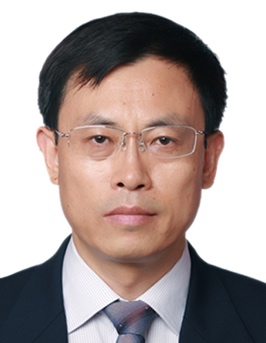Shao-Ming Dong
Shanghai Institute of Ceramics, Chinese Academy of Sciences
Abstract: Fiber reinforced Si-B-(C,N) matrixed composites posses many interesting properties, such as light weight, high temperature resistance, non-catastrophic fracture and excellent mechanical performances. Furthermore, the existence of B containing species in these materials endows them with crack self-healing property, which can significantly enhances their high temperature resistance, making these materials for long-term service in high temperature oxidative environment possible. In light of that, fiber reinforced Si-B-(C,N) matrixed composites have attracted great attention worldwide and are regarded as promising candidates for applications in aerospace and national defense fields. Chemical vapor infiltration (i.e. CVI) is one of the most important techniques for fabrication of these materials, therein the influences of prosessing parameters on the composition and properties of the materials are very complicated. In particular, the multi-element composition characteristics of Si-B-(C,N) makes the composition and property optimization of the materials even more difficult. Hereby, the development of fiber reinforced Si-B-(C,N) matrixed composites is a very cost and time consuming process.
Based on material genetic engineering concept, high throughput fabrication of fiber reinforced Si-B-(C,N) matrixed composites through CVI method is studied in the present work. Here, a high throughtput CVI system is developed by means of comprehensive control of the temperature gradient and gas flow rate in the multi-channel deposition chamber. High throughput fabrication of Si-B-(C,N) material up to 140 samples per bath is realized. The deposition mechanism as well as the chemical composition and property optimization of the material are intensively studied. This work provides a novel way for high efficient development of ceramic matrix composite.
Key Words: Ceramic matrix composite; Coating;Chemical vapor deposition;Si-B-(C,N)
Si-B-(C,N)涂层高通量化学气相沉积及其组成与性能优化调控
董绍明
摘要:Si-B-(C, N) 陶瓷基复合材料轻质、耐高温、非脆性断裂、力学性能优异,特别是材料中B元素的存在进一步赋予其以裂纹自愈合特性,可大大提高材料高温抗氧化性,实现材料在高温氧化环境下的长寿命服役。材料以上特性使得其在航空航天和国防领域有着巨大的应用潜力,受到各国的高度关注。化学气相浸渗法(CVI)作为Si-B-(C, N)陶瓷基复合材料制备的重要技术手段,工艺因素对材料组成和性能的影响复杂。特别是Si-B-(C, N)多元素组成特征,进一步增加了材料化学组成和性能的优化筛选难度。存在着材料的开发实验周期长、原材料消耗大、研发成本高等难题。基于材料基因工程思想,本工作开展Si-B-(C, N)材料高通量化学气相沉积研究。通过高通量化学气相沉积系统的设计和构筑,成功实现了Si-B-(C, N)材料的高通量化学气相沉积,并就材料的化学气相沉积机理及其化学组成和性能优化筛选展开研究。

(a) 系统总体设计 (b) 沉积室设计
图1. 高通量化学气相沉积系统设计示意图,其中沉积室中反应通道为不同直径的管道。
本工作基于气体管道输运理论以及欧姆定律,以反应气体流速和化学气相沉积温度为主控变量,设计和构筑线性温度梯度-变气体流速多通道化学气相沉积系统(图1)。利用不同通道内部反应气体流速的差异,以及同一通道内部不同区域温度的差异,实现涂层在变气体流速和变沉积温度条件下的高通量化学气相沉积,获得具有不同化学组成和结构的Si-B-(C, N)涂层。所研制的高通量化学气相沉积系统,其中各反应通道之间气体流速比可达16:9,同一通道内部温差达100C,可同时实现140个以上不同组成试样的单批次化学气相沉积。
涂层元素分析表明,受沉积反应热力学和动力学因素影响,Si-B-(C,N)涂层的化学组成对反应气体流速和沉积温度高度敏感(图2和图3)。同一通道内部相同气体流速条件下沉积的涂层,其Si、N含量随着沉积温度的提高逐渐增大,C、B含量随沉积温度的提高逐渐下降。而在相同温度不同通道内部沉积的涂层,其B、Si含量随着通道直径(即反应气体流速)的增加而增大,但C、N含量随通道直径的增加分别呈正、反抛物线形式变化。



 图2. 同一通道内部相同气体流速条件下沉积Si-B-(C,N)涂层化学组成与力学性能随沉积温度变化曲线。
图2. 同一通道内部相同气体流速条件下沉积Si-B-(C,N)涂层化学组成与力学性能随沉积温度变化曲线。



 图3. 890C下不同直径反应通道内部沉积Si-B-(C,N)涂层化学组成和力学性能随反应气体流速(通道直径)的变化曲线。
图3. 890C下不同直径反应通道内部沉积Si-B-(C,N)涂层化学组成和力学性能随反应气体流速(通道直径)的变化曲线。
关键词:陶瓷基复合材料;涂层;化学气相沉积;Si-B-(C,N)

研究员,博士生导师。中科院上海硅酸盐研究所结构陶瓷工程研究中心主任、中国空间科学委员会空间材料专业委员会主任委员、美国陶瓷学会工程陶瓷分会国际委员会委员。长期从事陶瓷基复合材料和碳化物陶瓷研究,在新型碳化物陶瓷及陶瓷基复合材料结构、性能设计及工程化应用技术开发方面贡献突出。研发的大尺寸复杂形状SiC陶瓷和陶瓷基复合材料部件于国内率先实现在空间动力、空间遥感、新型飞行器等领域的应用,解决国家重大装备核心部件需求。获国家技术发明二等奖3项(第1完成人2项),国家行业学会技术发明一等奖1项,省部级奖励4项;以及全国“杰出工程师奖”、上海领军人才、美国陶瓷学会工程陶瓷分会“Global Star Award”等多项荣誉和称号。因在陶瓷基复合材料领域的突出贡献,2013年当选世界陶瓷科学院院士。
Email: smdong@mail.sic.ac.cn